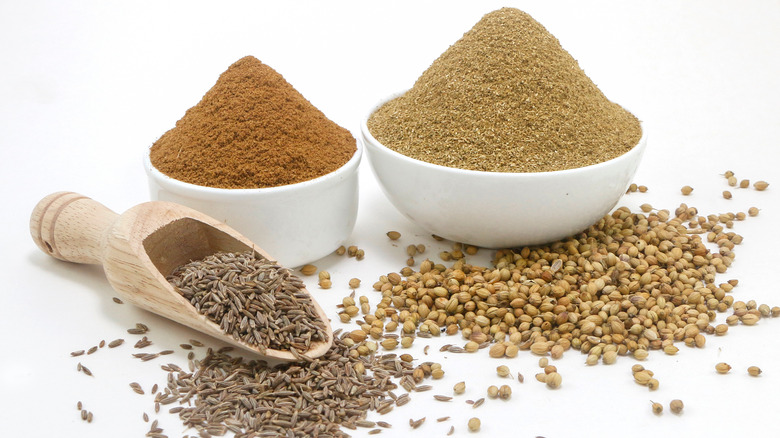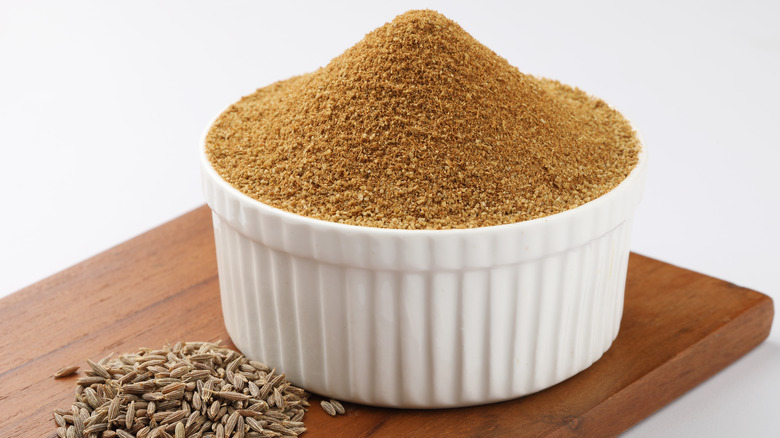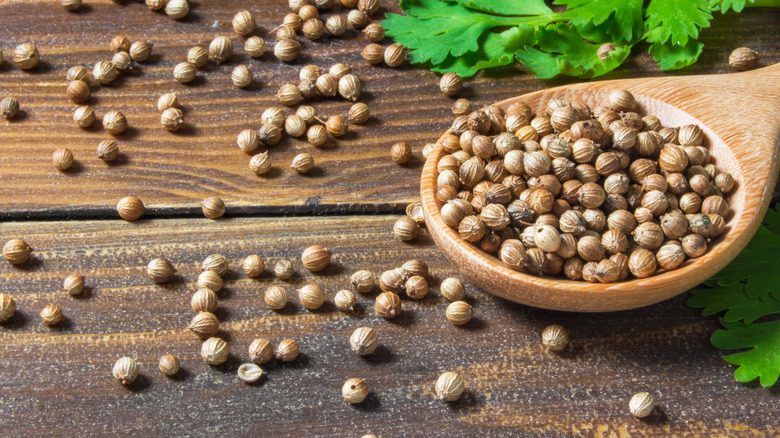What's The Real Difference Between Coriander And Cumin?
Cumin and coriander: These two flavorful and aromatic spices are often confused, and it's easy to understand why, thanks to the fact that they are often paired together in recipes. Though cumin and coriander have much in common, the real difference between these two versatile herbs comes down to their flavors.
MySpicer points out that both are essential components of the Indian spice blend garam masala, and used extensively in other Indian dishes. Cumin and coriander are also integral to a number of cuisines. It's when you look at their flavors individually that you see (and taste) the difference.
The flavor of cumin has been described as warm and earthy and also as having a bitter edge (via FineCooking). In addition to playing a prominent role in Indian and Middle Eastern dishes, cumin is strongly associated in the West with Latin American cooking. One taste of cumin and you will recognize it as a part of savory chili powder and taco seasoning blends.
Coriander, while often paired with cumin, has a flavor all its own. McCormick Gourmet labels coriander flavor as "sweet with a hint of lemon." That sweetness makes coriander a great choice for both desserts and savory dishes. (While it might be hard to imagine including cumin in a cake, BBC GoodFood happily adds coriander to a sweet, orange drizzle cake.)
How to recognize and use cumin
When buying whole cumin, MySpicer says to look for flat, narrow seeds. The seeds are brown with pale stripes, and bear a resemblance to caraway seeds.
The best way to use whole cumin seeds in recipes is to add them in the early stages, by first toasting them in a dry pan or by blooming the seeds in hot oil. This helps to bring out the gentle flavor of the whole seeds. Ground cumin is very aromatic, and can be used alone or in spice blends and rubs. Use slightly less ground cumin in recipes where you're substituting it for whole cumin.
Use cumin in a number of savory meat-based or vegetarian recipes, including MyRecipes favorites like chili, baked salmon, and chickpea salad. Bon Appétit pairs cumin with cinnamon and fenugreek in a harissa-spiced pot roast. And Taste of Home makes a tantalizing batch of air fryer, cumin-seasoned carrots.
How to recognize and use coriander
When shopping for coriander, head to the spice aisle and look for it in whole or ground varieties. Whole coriander are light brown, round seeds. Beware of recipes calling for "fresh coriander", because this actually means fresh cilantro. HuffPost writes that in the United Kingdom, "coriander" is the term used for fresh cilantro, and that this can be very confusing for American cooks, since cilantro is grown from coriander seeds.
Need some recipe inspiration? Add the sweet and citrus-y flavor of ground coriander to savory dishes like Coriander Rice from Epicurious or Mexican chicken stew. The lemony kick of coriander is worth adding to sweet recipes too, like blueberry muffins or New York Times' Coriander Ginger Cake. There's no shortage of ways to use coriander in your cooking.


